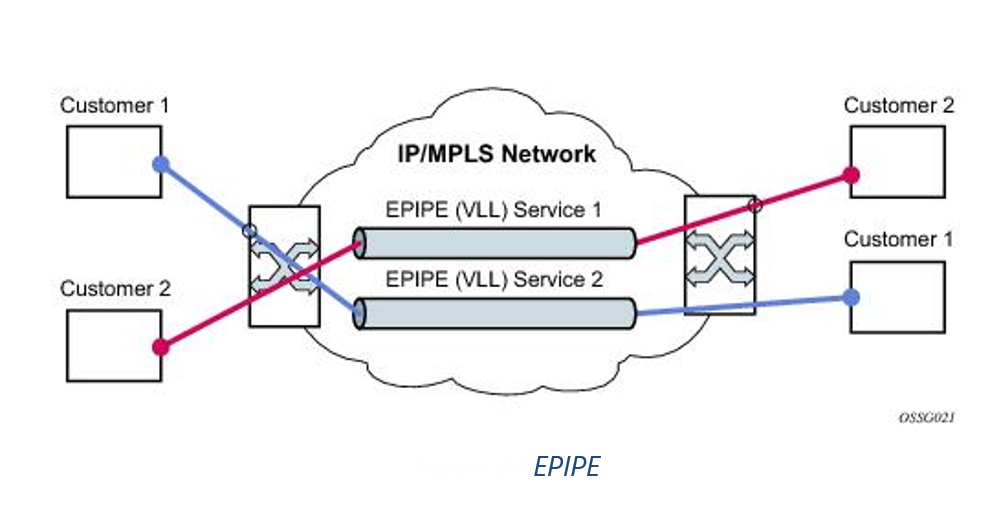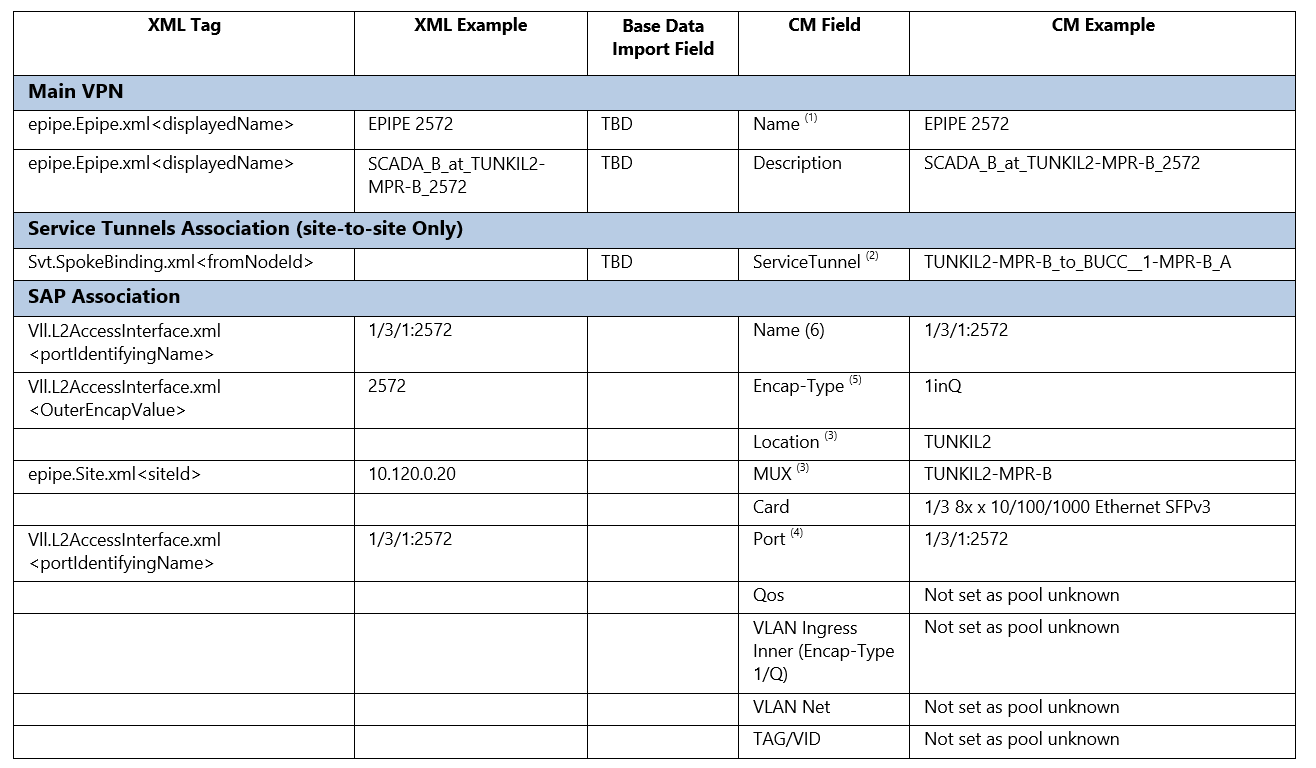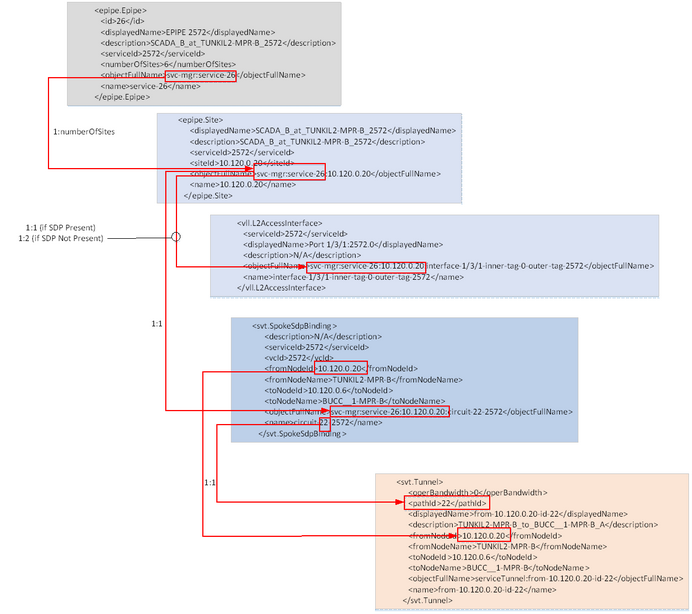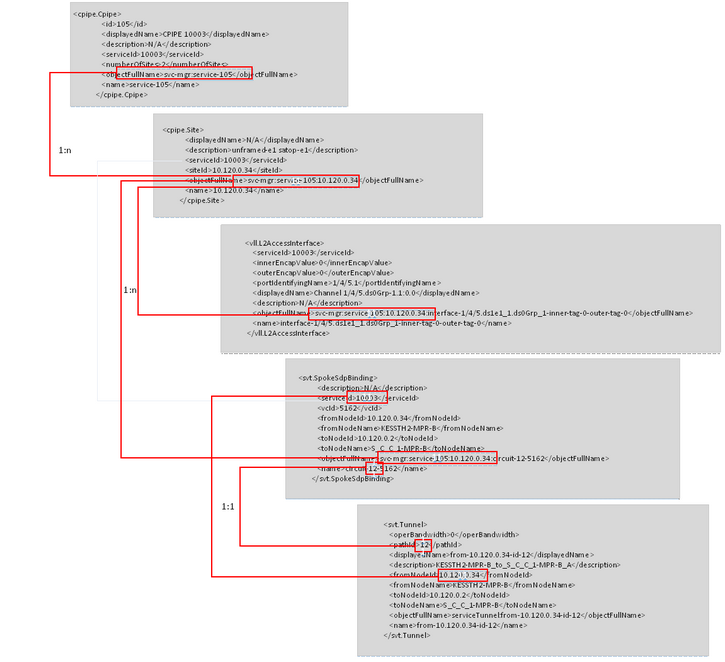VLL VPN
The following types of VLL circuits are currently modelled in Connect Master:
•EPIPE – Ethernet Pseuodwire over MPLS
•CPIPE – Circuit Emulation – Typically E1 over MPLS
For IES refer to https://infocenter.Nokia/Alcatel-lucent.com/public/7705SAR61R4A/index.jsp?topic=%2Fcom.sar.services%2Fhtml%2Fies_service.html


SAM Modelling
Nokia/Alcatel SAM Models EPIPE with the following hierarchy:
EPIPE -> SITES -> L2 Interfaces -> Service Tunnel
ConnectMaster Modelling
In CM the EPIPE will be modelled as VLL with the following characteristics:
1)Service Tunnel Bindings – Technically L2 Services use Psuedowires as transport layer, however Nokia/Alcatel SAM reports everything as Service Tunnels.
2)2 x SAP Ports
To utilise the EPIPE users will route an Ethernet TC over the VLL.
Note: From architecture point of view it is expected that there is only one inter-site VPN. The rule is as follows:
•Inter-Site -> Any Sites with SDP Binding
•Intra-Site -> Any Sites with no SDP Bindings
A new VLL is created for each Intra-Site VLL post-fixed with its Site ID



SAP VLAN Mapping
SAP in Connect Master at moment are modelled with the following Syntax:
Port:OuterVLAN:InnerVLAN
This is different to how Nokia/Alcatel handles the VLAN Syntax which is reverse:
Port:InnerVLAN:OuterVLAN
As a result a new feature will be added allowing Admin to swap Inner and Outer format globally from the library.
Field Mappings
Source File – epipe.Epipe.xml (Initial Data Source for VLL)
Source File – epipe.Site.xml (List of Sites associated with SAM EPIPE Element)
Source File – vll.L2AccessInterface (Provides associated SAP)
Source File – svt.SpokeSdpBinding.xml (Service Tunnel Binding Point to VLL)

NOTES:
1)Intra-Site VPN will be post-fixed with Site ID. ie. EPIPE 2572(10.120.4.2)
2)Local VLL don’t have any Service Tunnel
3)Need to resolve Mux from <siteId> IP Address
4)Need to resolve Card/Port from <portIdentifyingName>, Ports can be Physical or Virtual Sub-Ports
5)If <OuterEncapValue> = 0 then Encap-Type = Null, otherwise = 1inQ
From a handling perspective there is no difference between EPIPE and CPIPE. Note however that a virtual sub-port will already be created automatically under E1 ports. i.e 1/4/1.1
XML EPIPE Hierarchy

XML CPIPE Hierarchy

